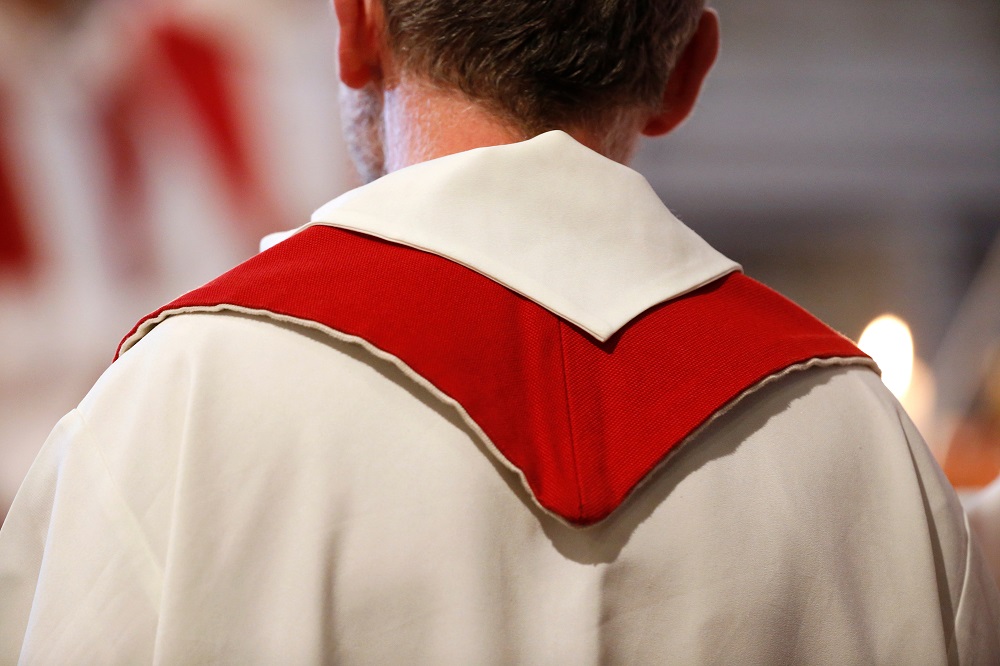The distinctions between gothic and semi-gothic chasubles

Vestments are liturgical clothes and artifacts linked with Christianity, particularly among Catholics (both Eastern and Western Churches), Lutherans, Eastern Orthodox, and Anglicans. Many other groups use liturgical garb; this was a subject of contention throughout the Protestant Reformation and occasionally later, most prominently during the nineteenth-century Ritualist conflicts in England.
Vestments have a rich history in Christianity, and they symbolise the important work that priests do. While the clothing worn by priests in different Christian sects has many similarities, there are also significant differences. You may also notice that the colours of priest vestments change throughout the year, which is just another way for priests to interact with their community via their clothing.
Clergy shirts and other priest attire are appropriate for both special and regular services, but they are also regularly worn in public. Wearing religious attire in public allows priests to be identified as clergy members, informing the public that they may turn to them for help and support.
Leaders and officers of the early Christian churches, like their congregations, wore the regular garb of Greco-Roman civil life, with the intention that the apparel is pure and clean amid holy observances. Nevertheless, changes in the shape of the garments began in the fourth century, and when secular fashions changed in the sixth century, the Church maintained the old forms of their attire, albeit with significant development and regional distinctions. By the 13th century, the Catholic churches had almost reached their final form.
Vestment requirements
The kind of vestments that must be worn range between faiths and communions. Clergy are expected to wear a certain clerical dress in public at all, most, or sometimes in various jurisdictions. This usually consists of a clergy shirt, a clerical collar, and (in rare cases) a cassock. Religious orders' non-liturgical apparel includes a religious habit. This is not a liturgical vestment; instead, it helps to identify the wearer as a member of the clergy or religious order.
The vestment used during Holy Communion or Holy Eucharist is typically distinct from that worn for other services. Non-Eucharistic vestments are frequently referred to as "choir habit" or "choir dress" in the Orthodox, Roman Catholic, and churches since they are worn during the reciting of the Daily Office, which occurs in the choir instead of the sanctuary. There is no particular name for this garment in other faiths; nonetheless, it generally takes the shape of a Geneva gown worn with or without a preaching scarf or stole and preaching bands.
Traditionally, each vestment—or, at the very least, the stole—would have a cross, which the clergy would kiss before wearing it. Several churches have their vesting prayers, which are said before putting on each vestment, especially the Eucharistic vestments.
GOTHIC CHASUBLES
As you are probably aware, the gothic chasuble is one of the most iconic styles for the portion influencing clothing worn by clerics.
The Gothic chasuble is the topmost sleeveless garment piece used when attending Mass and other important events. Assume you're looking for a classic chasuble design or something a little more contemporary. In such a case, we offer the ideal collection of excellent and appealing Gothic chasubles of high quality, available in a variety of styles and colours, and suited for a wide range of liturgical festivities. These Gothic chasubles are lovely garments that have been expertly crafted. It is designed with one-of-a-kind and beautiful fabrics of extremely high quality, such as damask, and it is also available in plain fabric. It is lightweight and available in a variety of hues, the most popular of which are violet, green, and white.
SEMI GOTHIC CHASUBLES
Semi-gothic chasubles, as you may be aware, are quite similar to and share some traits with Gothic chasubles. Without a question, this semi-gothic chasuble is undoubtedly one of the most identifiable and popular types of priestly attire. It is a piece of apparel worn by priests at Mass and on numerous other important occasions.
Vestment.co.uk is a popular business selling catholic Polish vestments
Check out deacon dalmatics and copes or chasubles in styles like Roman, Semi-Gothic, and Gothic. Choose from chasubles for sale that come with matching stoles, and check out their attention to detail in all Catholic vestments. All clergy — bishops, priests, and deacons – can obtain correct and elegant clothes for Mass service.
Aside from liturgical vestments, they also sell a variety of other Mass-related items, such as embroidered altar linens and altar table cloths. The business also sells canopies and processional umbrellas, which are required for the Easter procession.
The Ackermann shop offers excellent purchasing circumstances, such as a straightforward return policy. You have 30 days from the date of purchase to return merchandise for any reason. Check out the website for more information.
